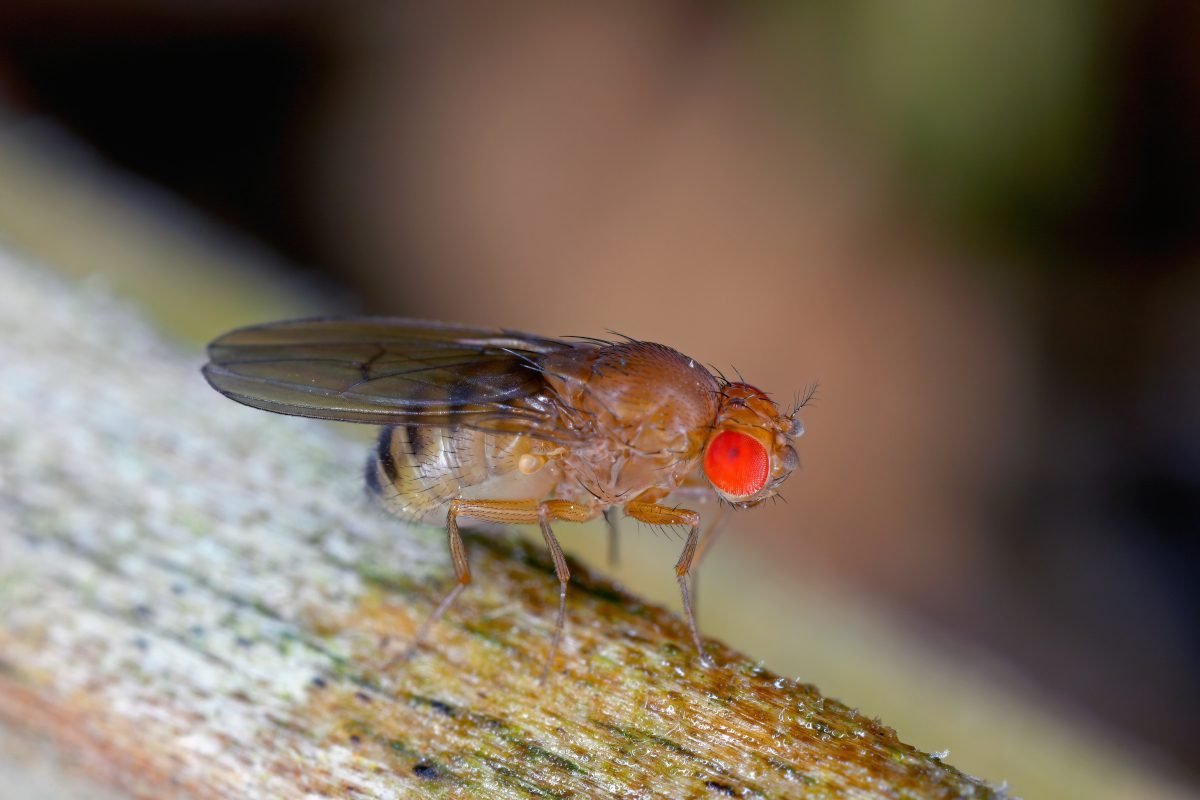
Measuring exposure to over 1,000 different agrochemicals, researchers reported significant changes in behaviour and long-term survival of different insect populations in a new study (words: European Molecular Biology Laboratory).
Declining insect populations (an average of 2-3% per year) has prompted a search for potential causes, such as habitat loss due to overdevelopment, climate change, and chemical use.
EMBL researchers and collaborators recently investigated how pesticides, herbicides, and other agrochemicals affect insect populations. They systematically exposed fruit fly larvae to more than 1,000 molecules contained within EMBL’s chemical library, which stores a variety of agrochemicals in a format readily usable for large-scale screens.
These fruit fly larvae came from multiple geographic locations, and the researchers followed their developmental time, behaviour, and long-term survival for the duration of their life cycle. They found that 57% of the tested chemicals altered fruit fly larvae behaviour significantly even in amounts known not to be fatal. A higher level of chemicals compromised long-term survival of the flies after this same kind of exposure.
“We found that when we exposed larvae to very low doses of chemicals, the exposure caused widespread changes in physiological processes that are at the heart of how they develop and behave,” said Lautaro Gandara, first author of a paper reporting these findings in the journal Science and postdoctoral fellow in EMBL’s Crocker research group. “These changes were exacerbated when we increased the temperature in the growing chambers by four degrees – a decision born from the idea that global temperatures have been on the rise and might affect how pesticides affect the larvae.”
The researchers started by raising the temperature in the growing environment by two degrees (from 25°C to 27°C). When they didn’t see much difference, they increased the temperature further to 29°C, which is still representative of summer temperature ranges for much of the world. At that point, they saw a pronounced impact.
“Further, we mixed some of the most commonly detected airborne chemicals, at ecologically relevant doses, again exposing fruit flies from when they first hatched. We then saw a much stronger effect,” said Justin Crocker, EMBL Group Leader and senior author of the recent scientific paper. “We observed a 60% drop in egg-laying rates, foreshadowing population decline but also other altered behaviours, such as more frequent hunching, a behaviour rarely seen in the untreated groups.”
‘Hunching’ is when larvae bend or curl their bodies in an exaggerated manner. It can signal stress or discomfort, but more importantly, underlying issues such as toxicity, neurological effects, or physiological processes that have been disrupted.
“On the surface, hunching may seem inconsequential, but even small changes in behaviour can impact fitness if they adversely affect feeding, mating, and migration, for example,” Crocker added. “Scientists need to understand how animals interact with each other and their environment to predict the impact of changes, such as habitat destruction or climate change, on ecosystems.”
The group acknowledged they don’t yet know if this hunching is connected to other changes they found, like the reduced egg-laying rate. It’s possible the two behaviours are unrelated. Despite that, it’s likely that larvae that spend a lot of time hunching instead of eating won’t thrive in a natural environment.
Gandara and Crocker teamed up with several other scientists for this study. Jean-Baptiste Masson and François Laurent from the Pasteur Institute, along with Christian Tischer’s team at EMBL, provided AI-driven approaches to understand behavioural effects with high statistical resolution. Other EMBL collaborators included the Zimmermann Group, with its chemical library, the Savitski Group for proteomics expertise, and the Zimmermann-Kogadeeva group for computational biology expertise.
Collaborators Vicky Ingham, a group leader at Heidelberg University Hospital, and Arnaud Martin, an associate professor in Biology at George Washington University, helped the EMBL researchers expand their experiment’s scope to include mosquitoes and Painted Lady butterflies, respectively, where they found similar patterns and were thus able to validate the experimental approach and conclusions.
“Insects – even those that can seem like pests – are critical to the planet. They pollinate the plants we eat and they’re an important part of the food web,” Gandara said. “For a long time, people speculated on the various reasons for insect behaviour changes, but now this research helps clarify one significant contributing factor. One of the biggest takeaways from this work is that even small amounts of certain chemicals have impacts.”
Animal behaviour plays a crucial role in maintaining ecosystem balance. Additionally, as insect populations decline, so too does genetic diversity, which is critical for species to adapt to environmental changes presently and in the future.
“The positive aspect to this work is that we have new knowledge about which chemicals can cause certain molecular changes and associated behavioural and developmental changes,” Crocker said. “By providing data on the impact and toxicity of chemicals, these assays can translate into regulatory and industrial practices that better protect human health and the environment.”

